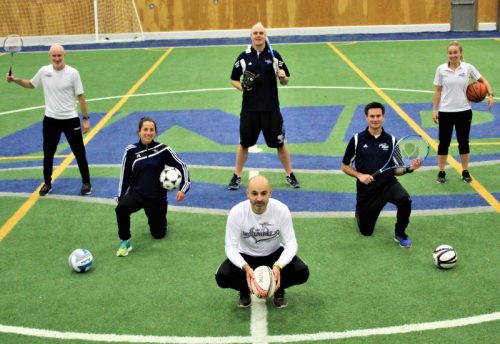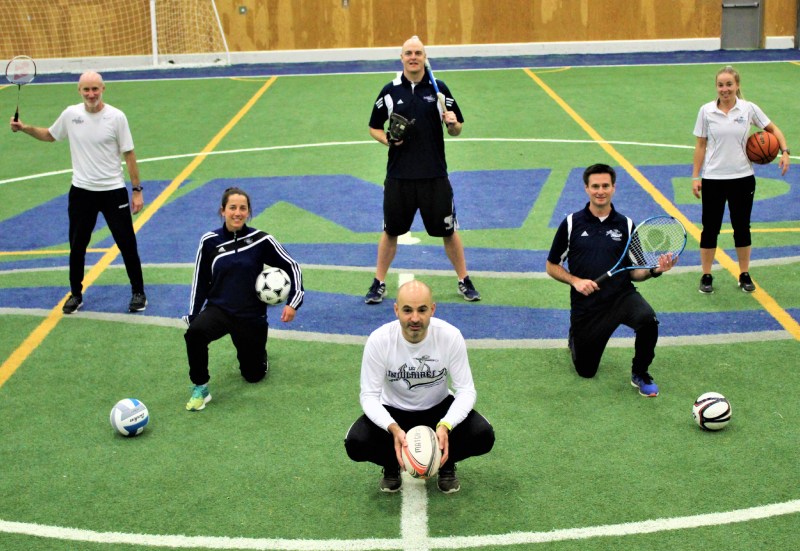Quebec secondary school launches innovative sport program
 Following the recent announcement of its official launch, the Sport 3D program and its designers have already been attracting a lot of interest from the sport sector over the past few weeks, including from media outlets such as Radio-Canada. Led by Sébastien Ouellet and five facilitators from Juvénat Notre-Dame du Saint-Laurent Secondary School, the innovative approach of this program seems to be addressing a definite need.
Following the recent announcement of its official launch, the Sport 3D program and its designers have already been attracting a lot of interest from the sport sector over the past few weeks, including from media outlets such as Radio-Canada. Led by Sébastien Ouellet and five facilitators from Juvénat Notre-Dame du Saint-Laurent Secondary School, the innovative approach of this program seems to be addressing a definite need.
“After Radio-Canada columnist Martin Leclerc’s article, many people have shown curiosity. It’s also sparked a strong interest from future students,” said Ouellet. “We are very pleased with the response from everyone. It reassures us of the direction we’re taking.”
In January 2021, Ouellet will be presenting at the Virtual Sport for Life Canadian Summit on the process that permitted the sports team at his school to produce and implement the Sport 3D program within the institution.
His approach, Sport 3D, meaning Développer et Diversifier pour Durer (Develop and Diversify to enDure) Develop and Diversify to Last, intends to seamlessly and optimally develop students’ sport competencies through diverse sports, with the goal of having them remain active throughout their lives.
The progressive five-year program (Grades 8-12) will welcome its first students, roughly 60 of them, in September 2021 when school resumes for another year.
In his presentation at the Summit, Ouellet will discuss initial reflections on this new approach, as well as the difficulties encountered and necessary adaptations to the introduction of the new program.
He hopes to outline the whole of the process established within Juvénat Notre-Dame.
“Sharing the experience could encourage other sport facilitators to follow a similar path, by modifying the current approach of their own programs. This new direction could almost certainly take place in any academic setting, with each person adding their own touches based on their views and the realities of their environment, all the while prioritizing what seems best for the youth.”
Ouellet isn’t shy about the challenges he encountered.
“The introduction of such a project is definitely taxing. You need to explain things well and be patient. As with any novelty, you must also expect to have to be convincing. The steps involved will require you to step outside of your comfort zone,” he said.
“But when things take shape and come to life in the way we envisioned, satisfaction gives rise to the motivation to continue to move forward in the desired direction.It’s validating for everyone. We experience a new dynamic and the entire school reaps the benefits.”
For the sport staff at his school, the reflection and desire to establish a new approach seemed to be obvious and proved necessary.
“Over the past few years, we’ve seen recurrent problems related to a lack of motivation amongst our students registered in our specialized sport programs, associated with a deficiency in the base level of sport competency,” he said.
“It therefore became dire to react and try to find solutions.This concern to offer something different to our youth increased in our discussions and we are happy today to have made this shift, in their best interest,” said Ouellet.
There were some concrete examples of the intended approach of Sport 3D being offered in primary schools, but very little was designed for students aged 12 to 17.
“We have established our own development model, taking into account, first of all, the recommendations of subject matter experts, and secondly, the reality of our environment in terms of our school’s human and material resources, adding our own views based on our lived sport experience and the vision we’ve formed of sport,” he said.
“All was designed with the hope that our youth will continue to participate in sport throughout their lifetime and will act as examples themselves to follow within their community.”
The Sport 3D program offers more than 18 different sports that, as the curriculum progresses, will vary based on the personal interests of the students. The first two years of the program will focus on strengthening basic competencies, the following two years will allow for enhancing learnings, and the fifth year will offer, in addition to perfecting skills in certain selected sports, the possibility for each student to focus on and to prepare to achieve one objective and to prepare to achieve it via an inclusive sport project.
To ensure real sport diversity, each course will be built around different activities targeting the practice of diverse sport groups (racquet sports, ball sports, team sports, individual sports). Outings and special activities are also planned, not only to allow students to attend high level competitions, but also to try sports that require specific coaching or environments or to work with youth from other schools.
While the Sport 3D program won’t be starting activities until September 2021, the facilitators have already started to pilot many of the program concepts with Grade 8 and 9 students.
“This process allows us to test, evaluate and develop our approach, in anticipation of our first group of students,” said Ouellet.
One of the hopes of Sport 3D is to build relationships with public sport organizations, in any sport. Based on its content, one of the assets of this new program is to be a real partner in a youth’s sport development.
“We are working in tandem with what is offered to youth outside of school. This complementarity will facilitate the work of all those involved in their development and the youth can only gain from this,” he said.
“We therefore hope to develop diverse collaborations with sports associations in our milieu; in this way, we are happy to have formalized a partnership with a soccer club from our area.”
As the first students begin the program, Ouellet felt a longitudinal study could also be put in place to validate the eventual benefits of this type of approach in the long term.
“It would be interesting if a study was conducted. It would in that respect be beneficial for others to analyze the results, to draw certain conclusions and to make necessary adjustments for different contexts, with the goal of contributing to a more active, healthier society,” said Ouellet.
To conclude, Ouellet is enthusiastic about the future: “Even though we are conscientious that we still have a lot of work to do to fulfill all of our objectives, we take great pride in finding fewer and fewer youth disengaging from sport following their secondary studies, and in the future, in seeing our former students remain active and willing to instill this lifestyle in their own kids.”
The loop would thus be closed, Sport 3D would have succeeded in “Develop and Diversify to enDure.”

